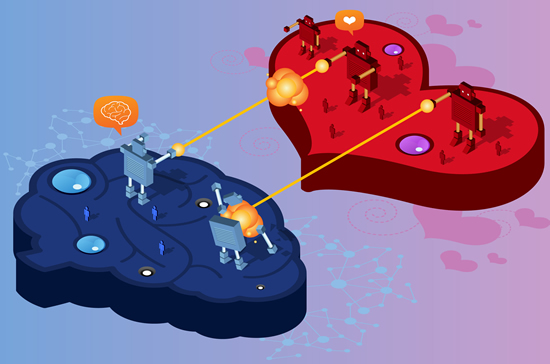Text Placement and Messaging in Advertising: Are You Appealing to Head or Heart?
How you communicate with your target audience matters to any bottom line. Sometimes you need a rational message that will appeal to your user's sense of reason, while at other times, you may need to elicit an emotional response from them. Both “reason” and “emotion” are two important concepts in marketing communications, and both are equally persuasive. But did you know that text placement influences how your message is perceived? According to several studies like, "The Influence of Print Advertisement Organization on Affect Toward a Brand Name" by the Journey of Consumer Research (pdf), and a congruent paper published by the Association for Consumer Research, it truly does matter whether you place your text above or below the image in an advertisement. 


Both “reason” and “emotion” are two important concepts in marketing communications, and both are equally persuasive to consumers.
"Metaphorically" Speaking
Reason, or rationality, and emotion are abstract concepts that are large in scope and hard to describe. Using metaphors helps people gain context. In Shakespeare's writing, and even in work as early as that of the ancient Athenian philosopher Plato, characters will point to their head to show they are making a rational decision, and each time you recall someone putting their hand over their heart, they're communicating an emotion. I remember reading The Wonderful Wizard of Oz as a child. The Tin Woodman thinks he's incapable of experiencing emotion because he lacks a heart. The Scarecrow thinks he lacks any intelligence because he's without a brain, and the Cowardly Lion was scared without his courage. Centuries-long use of these types of interpretations has led people to craft conceptual metaphors between head and heart. Here are a few more metaphors you've likely heard before:- Her voice is music to my ears.
- Books are the keys to the imagination.
- Time is money.
The Association Game
People also use expressions such as "actions speak louder than words" or "don't judge a book by its cover." Several well-known phrases like these are down generationally. What these associative expressions demonstrate is people, historically, unify emotions (the heart) with something rational (the head) to help messages take root. Protip: In web, we know to craft messages intended for unique, user segments and some messages will need to target either the head or the heart. Association, to some degree, can still help.MARKETING PSYCHOLOGY
Digital marketers are putting a lot of time into understanding who their target audience is and how best to approach them. They're creating content and message that not only the right fit with what interests target audiences but also with how messages can be better absorbed, elicit action, and create optimal content experiences. One example is psychological pricing. It's well known that people prefer odd numbers versus even ones.SCIENCE ABOVE MUSIC
In a 2015 study, Cian, Krishna, and Schwarz experimented with the placement of different elements on a web page. Forty-seven participants were shown two different sections of a web page design. The content was about music or science. The participants were asked where on a blank web page they would choose to place that section if they could access the entire page. As it turns out, participants who had the music section put it in a lower position on the web page than the participants who had the science-oriented section. What this study shows, is people naturally associate science (or reason) with a higher position and music (or emotion) with a lower position.







